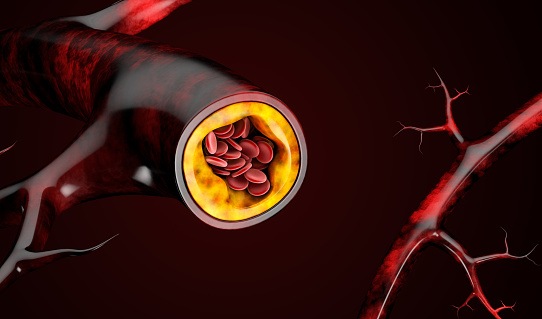
Atherosclerosis progresses rapidly in healthy adults after age 40, a new study suggests.
The three-year followup study included 3,154 patients from the Progression of Early Subclinical Atherosclerosis (PESA) study who underwent either 2-dimensional vascular ultrasound (2DVUS) of the abdominal aorta, carotid, iliac, and femoral territories to get a plaque number score, and three-dimensional vascular ultrasound (3DVUS) for the quantification of carotid and femoral artery plaque volume. The patients also had coronary artery calcium (CAC) scores determined at baseline and again at 2.8 years. The team calculated new disease incidence rates and changes in the extent of disease, and used logistic regression to determine associations between progression rates and baseline cardiovascular risk factors and estimated 10-year risk.
According to the results, imaging was able to detect short-term (3-year) atherosclerosis in 41.5% of study participants, particularly in peripheral territories imaged. New onset atherosclerosis accounted for more than one third of total progression. Age, sex, dyslipidemia, hypertension, smoking, and family history of premature cardiovascular disease contributed to progression, and progression was also detected in almost 37% (36.5%) of participants categorized as low-risk.
“This study is the first to analyze the progression of atherosclerosis at frequent intervals,” lead author Beatriz López-Melgar, MD, of Centro Nacional de Investigaciones Cardiovasculares (CNIC), in a press release. “The previous view was that the disease progressed very slowly throughout life. “Future data from the PESA study will show whether this progression is associated with subsequent cardiovascular events. Until now, the speed of atherosclerosis progression has not been a factor in assessing individual risk.”
Dr. Lopez-Melgar noted that the finding was important from a risk-assessment standpoint.
“The key finding of the study is that over a short follow-up of just three years, 40% of individuals aged between 40 and 50 years showed major progression of atherosclerosis in distinct locations, including the carotid, femoral, and coronary arteries,” said Dr López-Melgar. “This rapid disease progression could make these individuals more vulnerable to developing symptoms or having clinical events such as a heart attack or stroke.”
The study was published in the Journal of the American College of Cardiology.
Short-Term Progression of Multiterritorial Subclinical Atherosclerosis | JACC: Journal of the American College of Cardiology https://t.co/uMoSi6wEAs
— Edward Enterprises (@EdwardEnterpri3) April 7, 2020







 © 2025 Mashup Media, LLC, a Formedics Property. All Rights Reserved.
© 2025 Mashup Media, LLC, a Formedics Property. All Rights Reserved.